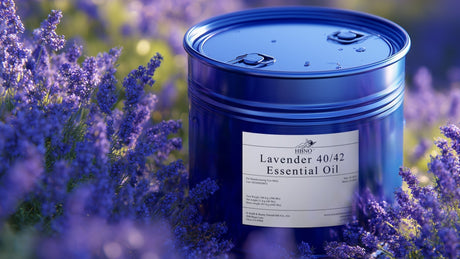When it comes to selecting the right oil for cooking and baking, two popular choices often come to mind: canola oil and extra virgin olive oil. Both oils have unique properties, flavors, and health benefits that can influence your culinary creations. In this comprehensive comparison, we'll delve into the origins, nutritional profiles, culinary uses, and health implications of canola oil and extra virgin olive oil to help you make informed decisions in the kitchen.
Origins and Production
Canola Oil
Canola oil is derived from the seeds of the canola plant, a cultivar of rapeseed. Developed in Canada during the 1970s, canola was bred to have low levels of erucic acid, making the oil more suitable for consumption. The production process involves cleaning and conditioning the seeds, followed by pressing or solvent extraction to obtain the oil. The oil is then refined to improve its color, flavor, and shelf life.
Extra Virgin Olive Oil
Extra virgin olive oil (EVOO) is obtained from the first cold pressing of olives, the fruit of the olive tree. This mechanical extraction method ensures that the oil retains its natural flavors, aromas, and nutrients without the use of heat or chemicals. To be classified as extra virgin, the oil must meet specific standards for acidity and sensory qualities, ensuring a high-quality product.
Nutritional Profiles
Canola Oil
Canola oil is known for its low saturated fat content and a favorable balance of omega-3 and omega-6 fatty acids. A tablespoon (14 grams) of canola oil provides approximately:
- Calories: 124
-
Total fat: 14 grams
- Saturated fat: 1 gram
- Monounsaturated fat: 9 grams
- Polyunsaturated fat: 4 grams
- Omega-3 fatty acids (alpha-linolenic acid): 1.3 grams
- Omega-6 fatty acids (linoleic acid): 2.8 grams
The presence of omega-3 fatty acids contributes to heart health, while the low saturated fat content makes it a heart-friendly option.
Extra Virgin Olive Oil
EVOO is celebrated for its rich content of monounsaturated fats and antioxidants. A tablespoon (14 grams) of extra virgin olive oil provides approximately:
- Calories: 119
-
Total fat: 14 grams
- Saturated fat: 2 grams
- Monounsaturated fat: 10 grams
- Polyunsaturated fat: 1.5 grams
- Vitamin E: 1.9 milligrams (10% of the Daily Value)
- Antioxidants: Polyphenols and tocopherols
The high monounsaturated fat content supports cardiovascular health, and the antioxidants present in EVOO have anti-inflammatory properties.
Culinary Uses
Canola Oil
With its neutral flavor and high smoke point (around 400°F or 204°C), canola oil is versatile in the kitchen. It's suitable for various cooking methods, including:
- Frying
- Sautéing
- Baking
- Grilling
Its mild taste makes it ideal for recipes where the oil should not overpower other ingredients.
Extra Virgin Olive Oil
EVOO boasts a distinct, robust flavor that can enhance many dishes. While its smoke point is lower (approximately 350°F or 177°C), it's well-suited for:
- Drizzling over salads and vegetables
- Dipping bread
- Low to medium-heat sautéing
- Baking (in recipes that complement its flavor)
Incorporating EVOO can add depth and richness to your culinary creations.

Health Implications
Canola Oil
Canola oil's favorable fatty acid profile contributes to its reputation as a heart-healthy oil. However, it's essential to consider the refining process, which may involve high heat and chemicals, potentially reducing some beneficial compounds. Additionally, most canola oil is derived from genetically modified crops, which may be a consideration for those seeking non-GMO options.
Extra Virgin Olive Oil
EVOO is minimally processed, preserving its natural antioxidants and healthy fats. Studies have shown that regular consumption of EVOO is associated with reduced inflammation, improved heart health, and potential protective effects against certain chronic diseases. Its anti-inflammatory properties are attributed to compounds like oleocanthal and oleuropein.
Baking Applications
When it comes to baking, the choice between canola oil and EVOO can influence the flavor and texture of your baked goods.
Canola Oil in Baking
Canola oil's neutral flavor and light texture make it a popular choice for baking. It's particularly suitable for:
- Cakes
- Muffins
- Quick breads
- Cookies
Its mild taste ensures that it doesn't interfere with the primary flavors of the baked goods.
Extra Virgin Olive Oil in Baking
Using EVOO in baking imparts a unique, fruity flavor that can enhance certain recipes. It's especially complementary in:
- Olive oil cakes
- Breads with herbs or citrus
- Mediterranean-style pastries
- Savory baked dishes
For those looking to add a gourmet touch to their baked goods, EVOO can be a delightful alternative.
Cost and Availability
Canola oil is widely available and tends to be more affordable than extra virgin olive oil. Due to its large-scale production and refining process, it remains an economical choice for those on a budget.
Extra virgin olive oil, particularly high-quality organic varieties like Olive Carrier Oil Extra Virgin Organic, tends to be more expensive. However, its rich flavor and health benefits often justify the higher price.
Conclusion
Both canola oil and extra virgin olive oil have their place in the kitchen. Canola oil offers a neutral taste and a high smoke point, making it suitable for frying and general cooking. Extra virgin olive oil, particularly Extra Virgin Organic Olive Oil, provides a depth of flavor and numerous health benefits, making it ideal for drizzling, dressings, and low-heat cooking.
For those seeking a high-quality option, Organic Extra Virgin Olive Carrier Oil is an excellent choice for culinary and skincare applications. Ultimately, the best oil for you depends on your cooking needs, health considerations, and personal preferences.
Work with a reliable Private Label Bulk Provider supplying high-quality products for growing brands.



